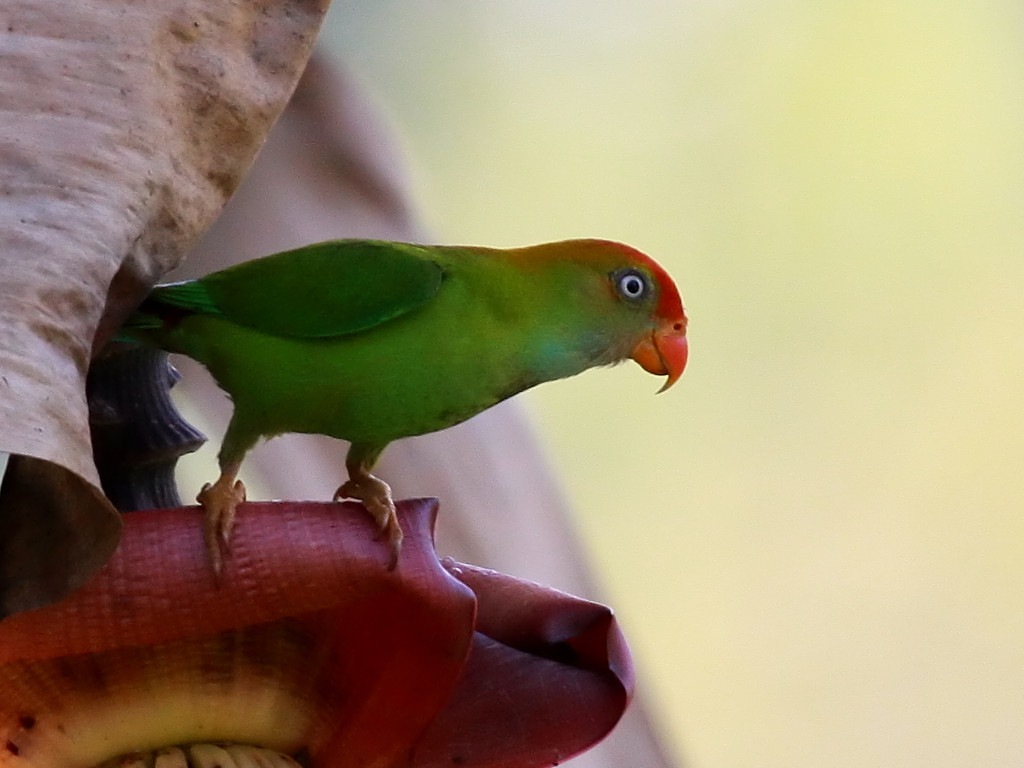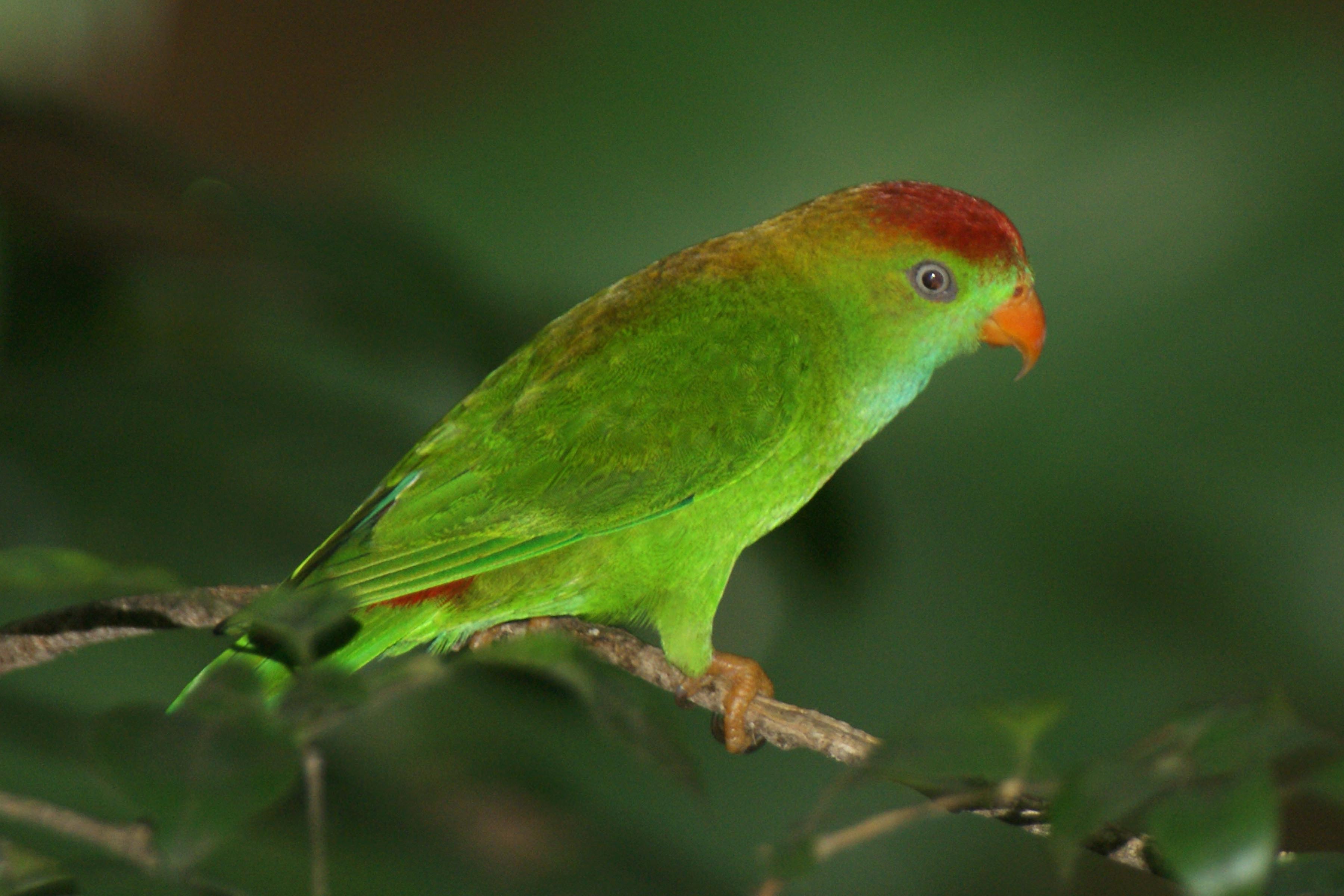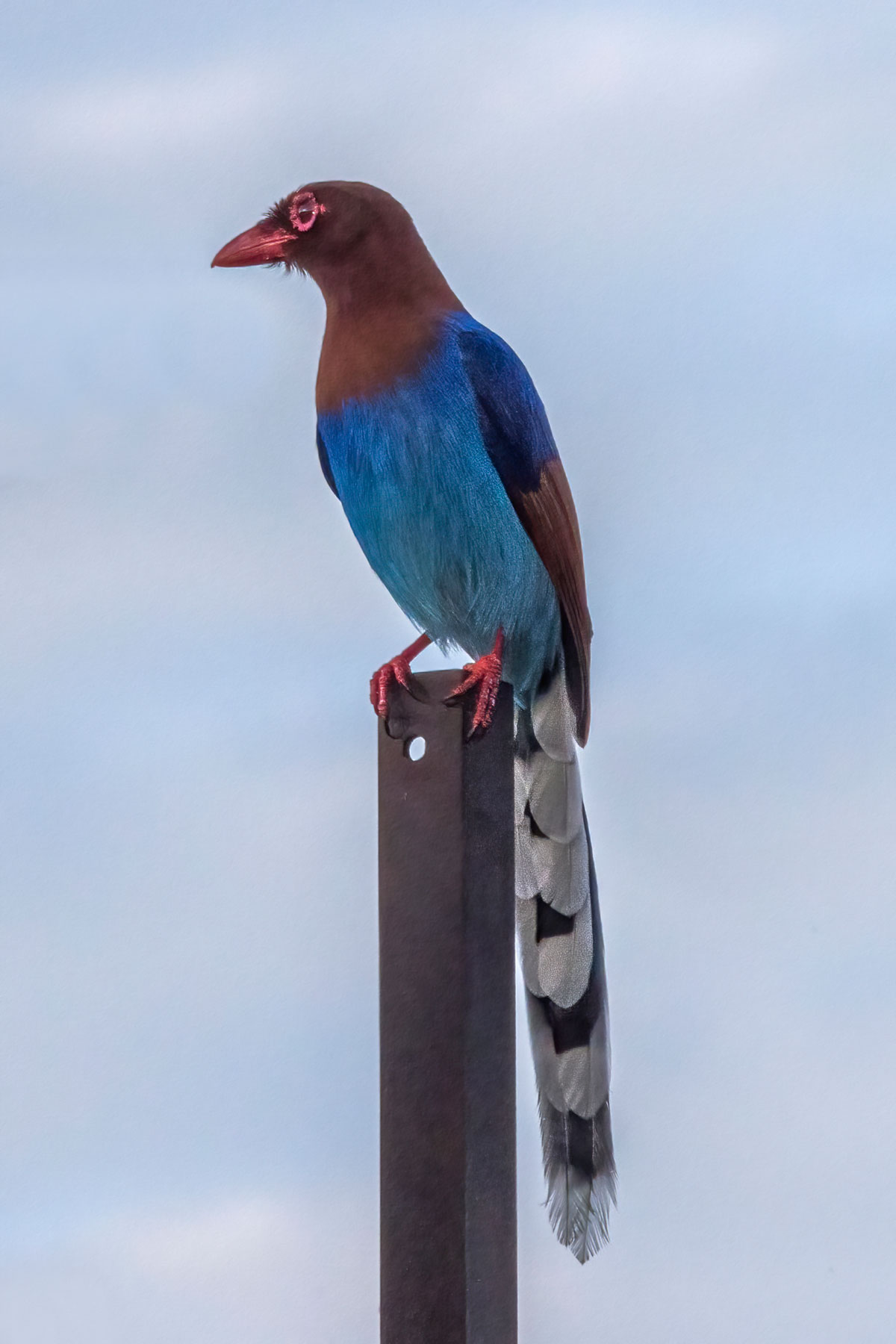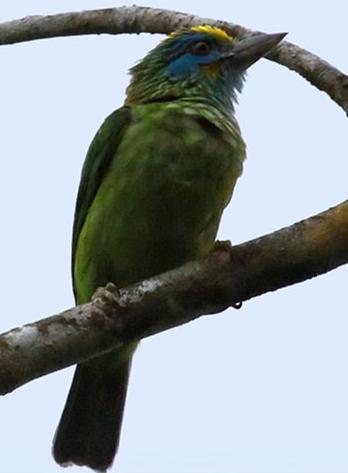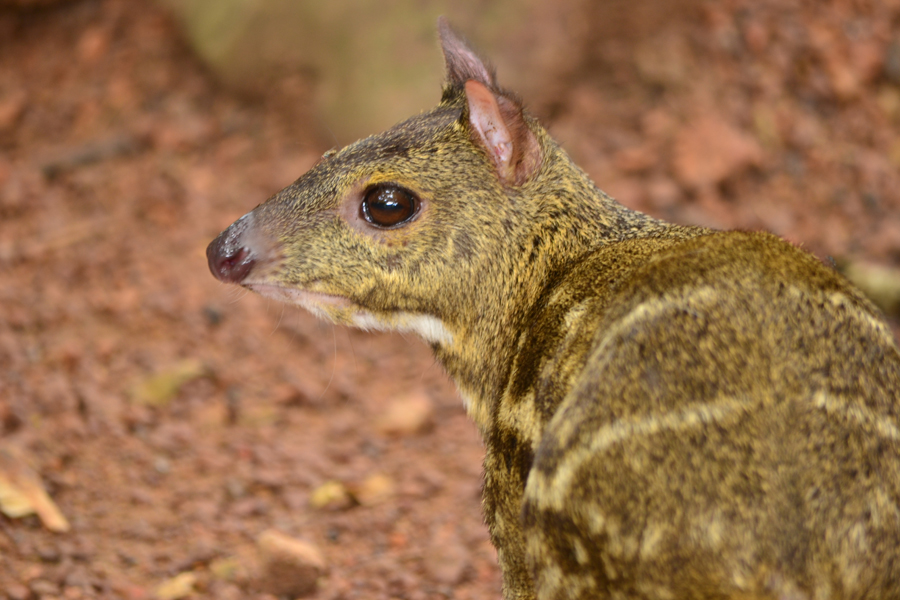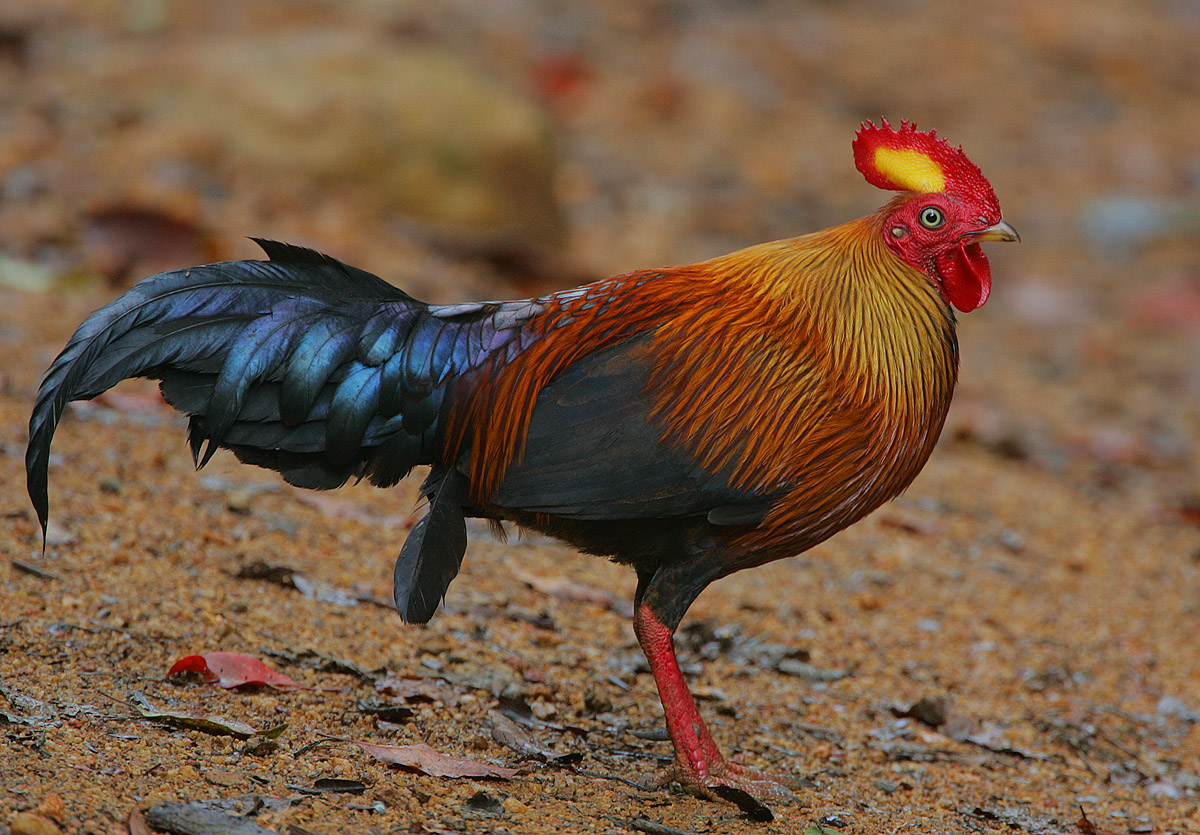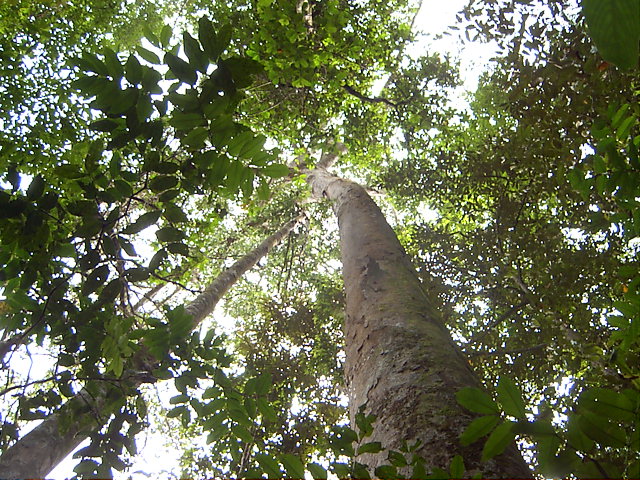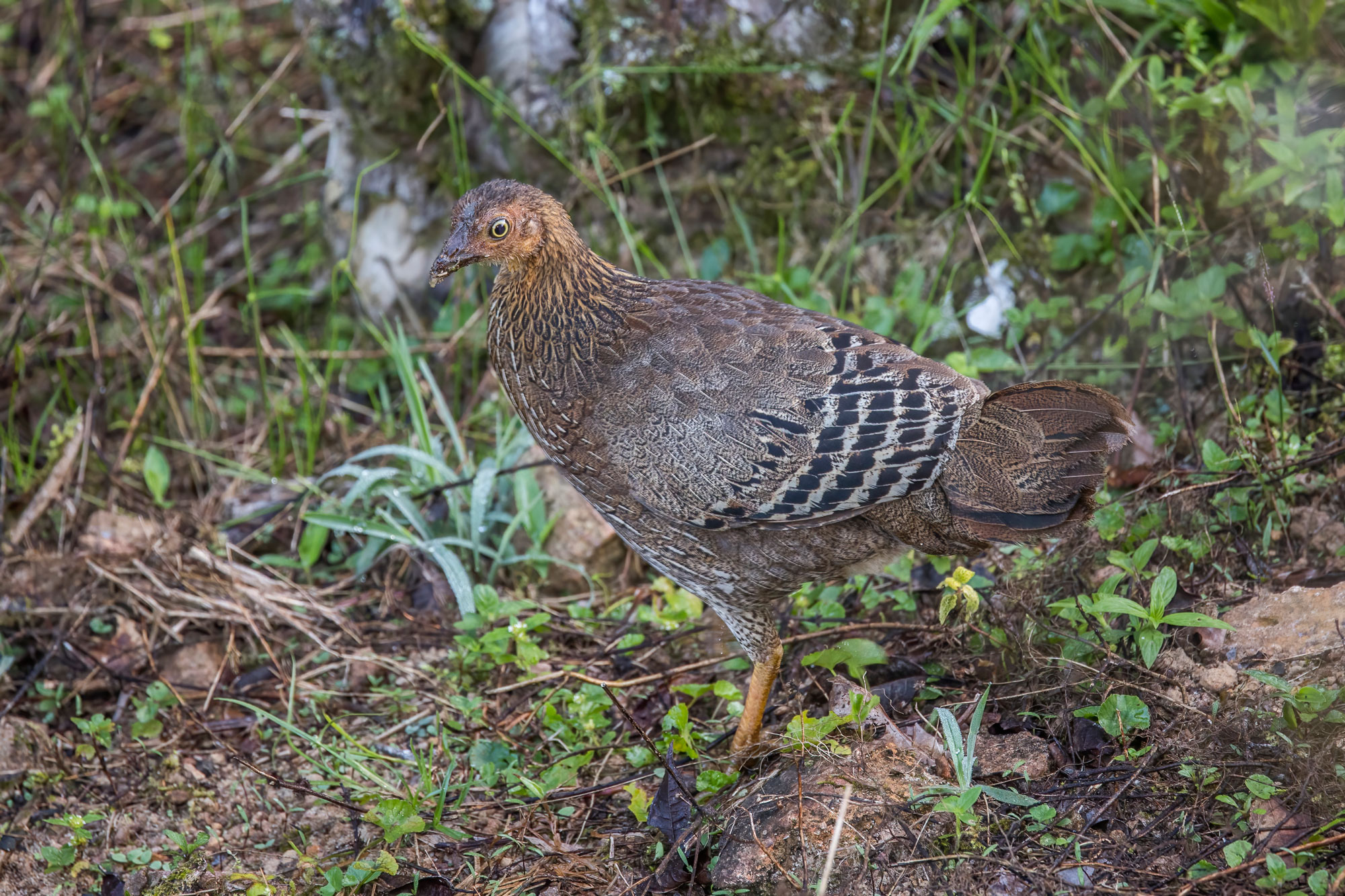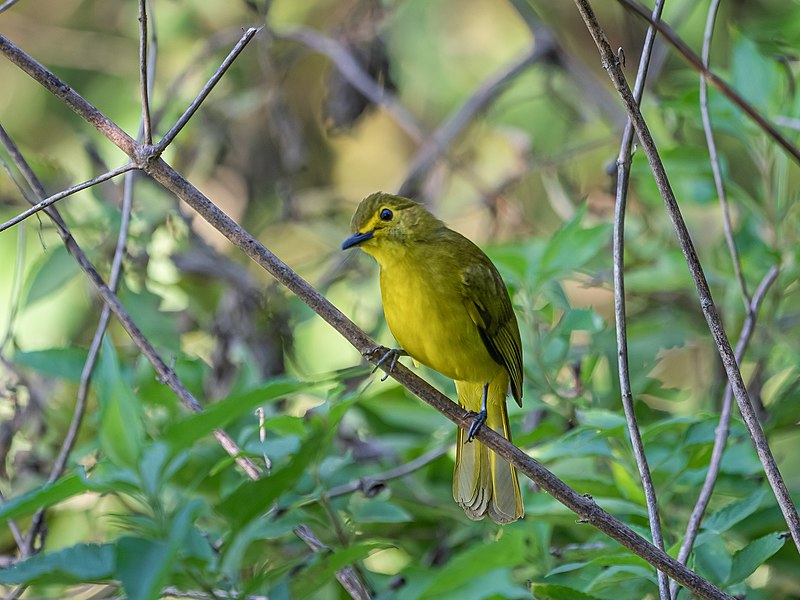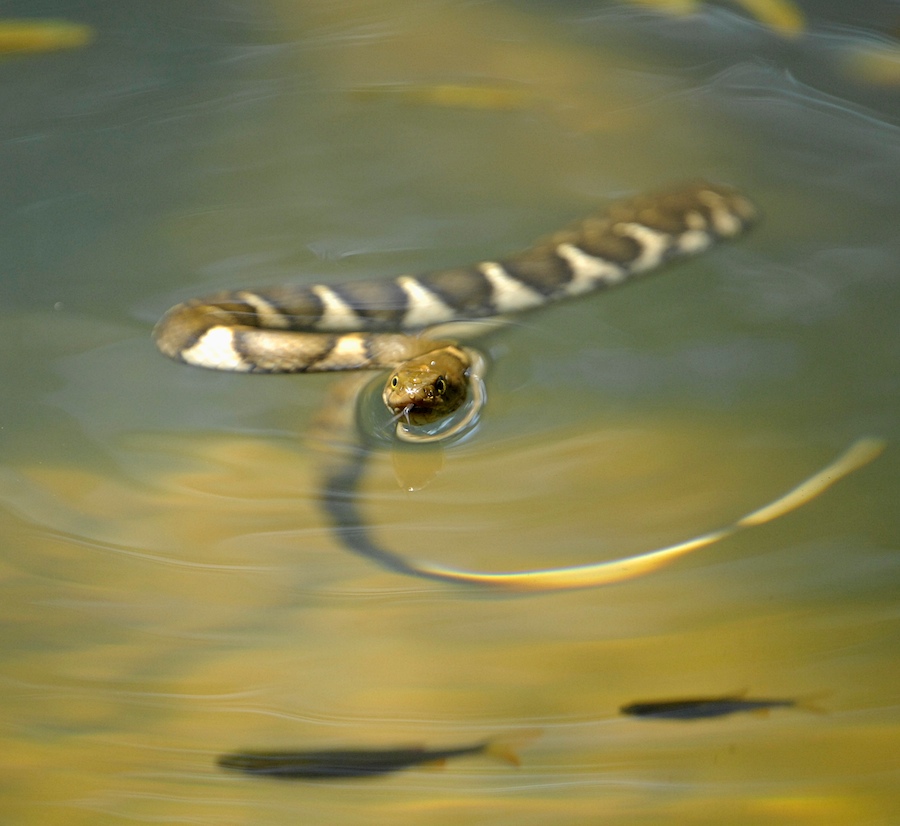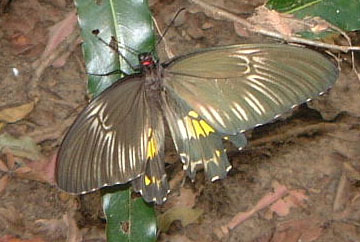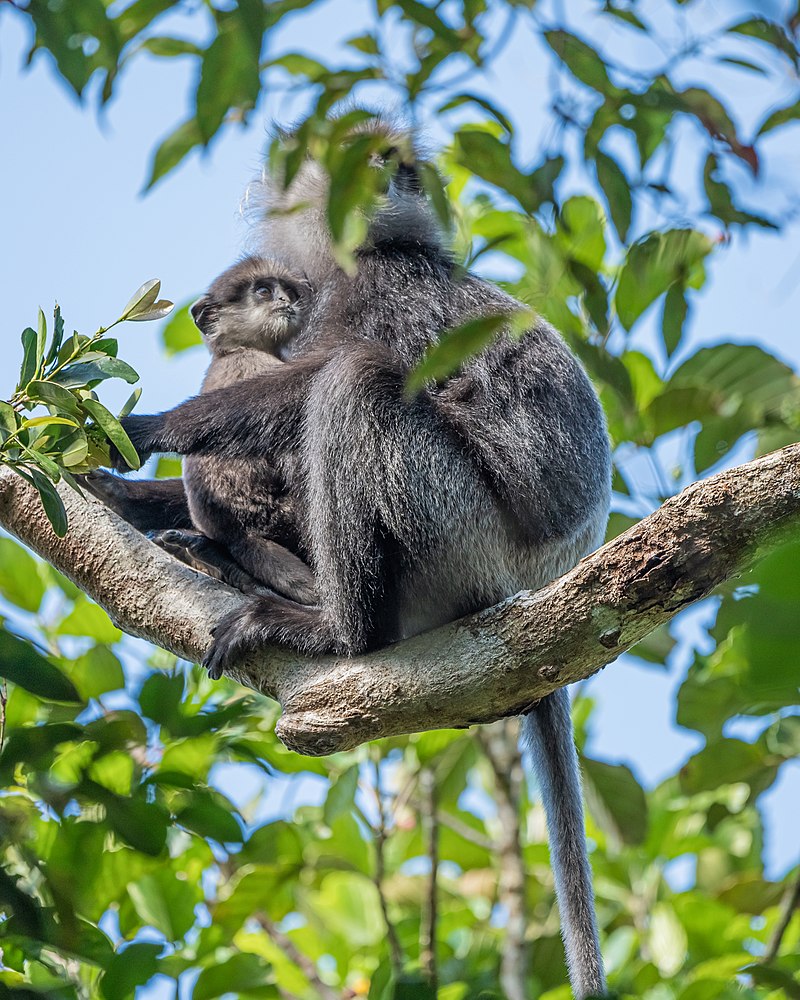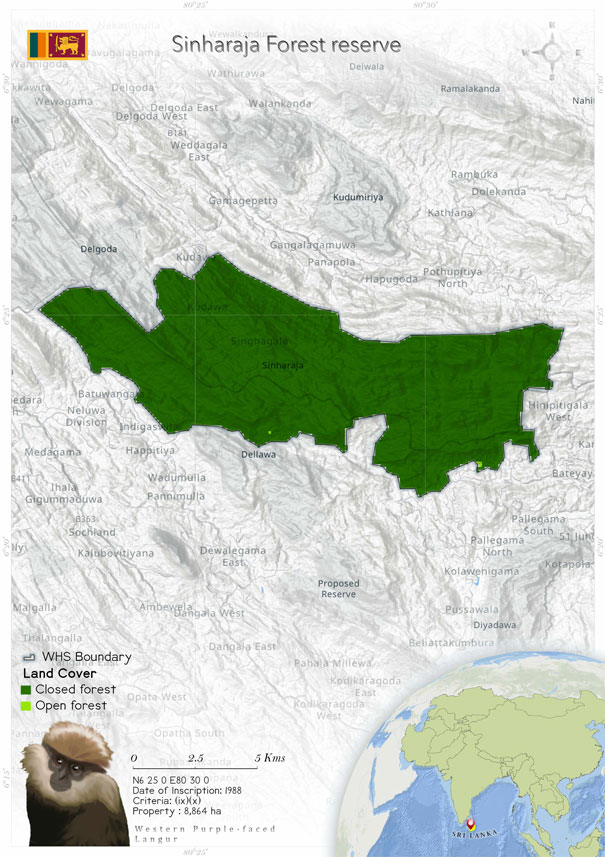
Sinharaja Forest Reserve (405)
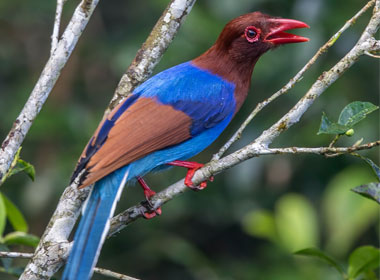 Inscribed in the year 1988, Sinharaja Forest Reserve is the only remaining lowland tropical rainforest in Sri Lanka. It is located in the south-western part of the country. The site has a criss-crossing network of streams running across it, ultimately flowing into the Gin River. It is home to a large number of endemic species of plant and animal. More than 60% of the tree species in the site are endemic and are considered rare. The faunal diversity of the site is rich. Several species of bird, mammal, amphibian, etc. are found in Sinharaja. Since its inscription, there has been an increase in research activities in the region. The site has been provided with the highest level of legal protection under the National Heritage Wilderness Area Act. The major threats to the area are illegal encroachment, mining, illegal hunting and logging, road construction, deliberately created forest fires, agriculture, etc. The runoff from agricultural fields, loaded with pesticides, is responsible for deterioration of the water quality. According to IUCN World Heritage Outlook, the site is of significant concern. National REDD+ Investment Framework and Action Plan (NRIFAP) and the World Bank-funded Ecosystem Conservation and Management Plan (ESCAMP) are the two newly launched projects aimed at addressing the issues involved. The participation of local communities has also played a major role in conservation in this region.
Inscribed in the year 1988, Sinharaja Forest Reserve is the only remaining lowland tropical rainforest in Sri Lanka. It is located in the south-western part of the country. The site has a criss-crossing network of streams running across it, ultimately flowing into the Gin River. It is home to a large number of endemic species of plant and animal. More than 60% of the tree species in the site are endemic and are considered rare. The faunal diversity of the site is rich. Several species of bird, mammal, amphibian, etc. are found in Sinharaja. Since its inscription, there has been an increase in research activities in the region. The site has been provided with the highest level of legal protection under the National Heritage Wilderness Area Act. The major threats to the area are illegal encroachment, mining, illegal hunting and logging, road construction, deliberately created forest fires, agriculture, etc. The runoff from agricultural fields, loaded with pesticides, is responsible for deterioration of the water quality. According to IUCN World Heritage Outlook, the site is of significant concern. National REDD+ Investment Framework and Action Plan (NRIFAP) and the World Bank-funded Ecosystem Conservation and Management Plan (ESCAMP) are the two newly launched projects aimed at addressing the issues involved. The participation of local communities has also played a major role in conservation in this region.
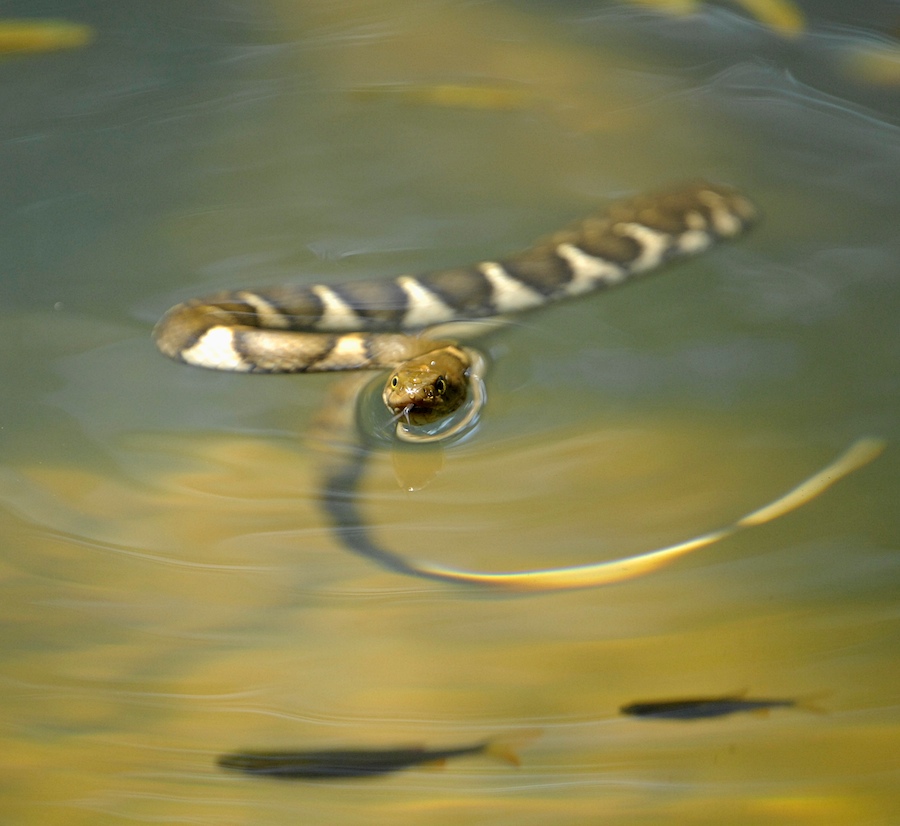 The word Sinharaja is derived from Sinha, meaning "lion" and raja, meaning "king". Located between latitudes 6° 21' and 6° 26' N and between longitudes 80° 21' and 80° 34' E, in the Sabaragamuva and Southern provinces of Sri Lanka, Sinharaja is one of the biologically unique tropical forests in Sri Lanka (Kumara & Samarawickrama 2019). The site has an extent of 8864 ha (6092 ha of Forest Reserve and 2772 ha of Proposed Forest Reserve), and its altitude ranges from 300 to 1170 m. It is located in south-western Sri Lanka. Sinharaja Forest Reserve is the last and largest viable remnant of lowland tropical rain forest in Sri Lanka. The eastern and southern parts of Sinharaja have the montane and sub-montane forest types. The site comprises a narrow strip of undulating terrain encompassing a series of ridges and valleys that are criss-crossed by an intricate network of streams. These streams drain both the south and the north, and they flow into the Gin River, on the southern boundary of the property, and the Kalu River via the Napola Dola, Koskulana Ganga and Kudawa Ganga, on its northern boundary. The site covers most of the Kalu Ganga basin and a smaller part of the northern Gin Ganga. Sixty per cent of the forest is contained within the borders of Rathnapura District. The rest falls within Galle and Kaluthara districts.
Primary and secondary tropical lowland wet evergreen rainforests are the major vegetation of Sinharaja, with a few patches of lower montane forest and grassland habitats in the higher altitude areas. Dipterocarpus communities form a clear emergent layer reaching about 45 m and are a part of the lower slopes and valleys. Mesua and Shorea are a part of the middle slopes, whereas the upper slopes are covered in sub-montane vegetation. Several endemic species of plant and animal have been discovered since the declaration of the forest as a World Heritage Site in 1988. Over 150 species of bird have been recorded in Sinharaja. Thirty-three of these species, endemic to Sri Lanka, are found in Sinharaja. The site is ideal for observing mixed-species feeding flocks, each having 5–15 species and between 30 and 60 individuals. The species in a mixed flock occupy different strata of vegetation, from the ground to the canopy, and constantly communicate among themselves. Out of the 96 mammal species recorded in Sri Lanka, 44 have been recorded from the Sinharaja rainforest. More than 40 species of reptile, nine species of bird, 24 species of freshwater fish and 45 species of amphibian have been recorded from the Sinharaja rainforest.
The World Heritage area is managed directly by the Divisional Forest Officer, from the Forest Department. A national steering committee co-ordinates the institutions for Sinharaja as a National Wilderness Area, Biosphere Reserve (1988), and World Heritage Site. The first management plan was prepared in 1985-86 followed by 1992-1994, which emphasize conservation, scientific research, buffer zone management, benefit-sharing and community participation.
The word Sinharaja is derived from Sinha, meaning "lion" and raja, meaning "king". Located between latitudes 6° 21' and 6° 26' N and between longitudes 80° 21' and 80° 34' E, in the Sabaragamuva and Southern provinces of Sri Lanka, Sinharaja is one of the biologically unique tropical forests in Sri Lanka (Kumara & Samarawickrama 2019). The site has an extent of 8864 ha (6092 ha of Forest Reserve and 2772 ha of Proposed Forest Reserve), and its altitude ranges from 300 to 1170 m. It is located in south-western Sri Lanka. Sinharaja Forest Reserve is the last and largest viable remnant of lowland tropical rain forest in Sri Lanka. The eastern and southern parts of Sinharaja have the montane and sub-montane forest types. The site comprises a narrow strip of undulating terrain encompassing a series of ridges and valleys that are criss-crossed by an intricate network of streams. These streams drain both the south and the north, and they flow into the Gin River, on the southern boundary of the property, and the Kalu River via the Napola Dola, Koskulana Ganga and Kudawa Ganga, on its northern boundary. The site covers most of the Kalu Ganga basin and a smaller part of the northern Gin Ganga. Sixty per cent of the forest is contained within the borders of Rathnapura District. The rest falls within Galle and Kaluthara districts.
Primary and secondary tropical lowland wet evergreen rainforests are the major vegetation of Sinharaja, with a few patches of lower montane forest and grassland habitats in the higher altitude areas. Dipterocarpus communities form a clear emergent layer reaching about 45 m and are a part of the lower slopes and valleys. Mesua and Shorea are a part of the middle slopes, whereas the upper slopes are covered in sub-montane vegetation. Several endemic species of plant and animal have been discovered since the declaration of the forest as a World Heritage Site in 1988. Over 150 species of bird have been recorded in Sinharaja. Thirty-three of these species, endemic to Sri Lanka, are found in Sinharaja. The site is ideal for observing mixed-species feeding flocks, each having 5–15 species and between 30 and 60 individuals. The species in a mixed flock occupy different strata of vegetation, from the ground to the canopy, and constantly communicate among themselves. Out of the 96 mammal species recorded in Sri Lanka, 44 have been recorded from the Sinharaja rainforest. More than 40 species of reptile, nine species of bird, 24 species of freshwater fish and 45 species of amphibian have been recorded from the Sinharaja rainforest.
The World Heritage area is managed directly by the Divisional Forest Officer, from the Forest Department. A national steering committee co-ordinates the institutions for Sinharaja as a National Wilderness Area, Biosphere Reserve (1988), and World Heritage Site. The first management plan was prepared in 1985-86 followed by 1992-1994, which emphasize conservation, scientific research, buffer zone management, benefit-sharing and community participation.
Criterion (ix)
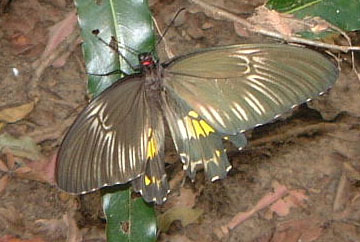 Sinharaja is the last remaining relatively undisturbed remnant of tropical humid evergreen forest in Sri Lanka. The property’s flora is a relic of Gondwanaland and provides an important component to our scientific understanding of continental drift and an outstanding site for the study of the processes of biological evolution. A geological feature of considerable interest is the presence of the Sinharaja basic zone, with the reserve located within the transition zone of two important rock types characteristic of Sri Lanka; the south-western group and the highland group.
Sinharaja is the last remaining relatively undisturbed remnant of tropical humid evergreen forest in Sri Lanka. The property’s flora is a relic of Gondwanaland and provides an important component to our scientific understanding of continental drift and an outstanding site for the study of the processes of biological evolution. A geological feature of considerable interest is the presence of the Sinharaja basic zone, with the reserve located within the transition zone of two important rock types characteristic of Sri Lanka; the south-western group and the highland group.
Criterion (x)
Endemism within the property is extremely high. Protecting the last viable remnant of Sri Lanka’s tropical lowland rainforest, Sinharaja is home to at least 139 endemic plant species within two main types of forest: remnants of Dipterocarpus in the valleys and on the lower slopes, and secondary forest and scrub where the original forest cover has been removed. Sixteen of the endemic plant species within the property are considered rare, including endemic palms Loxococcus rupicola and Atalantia rotundifolia.
Status
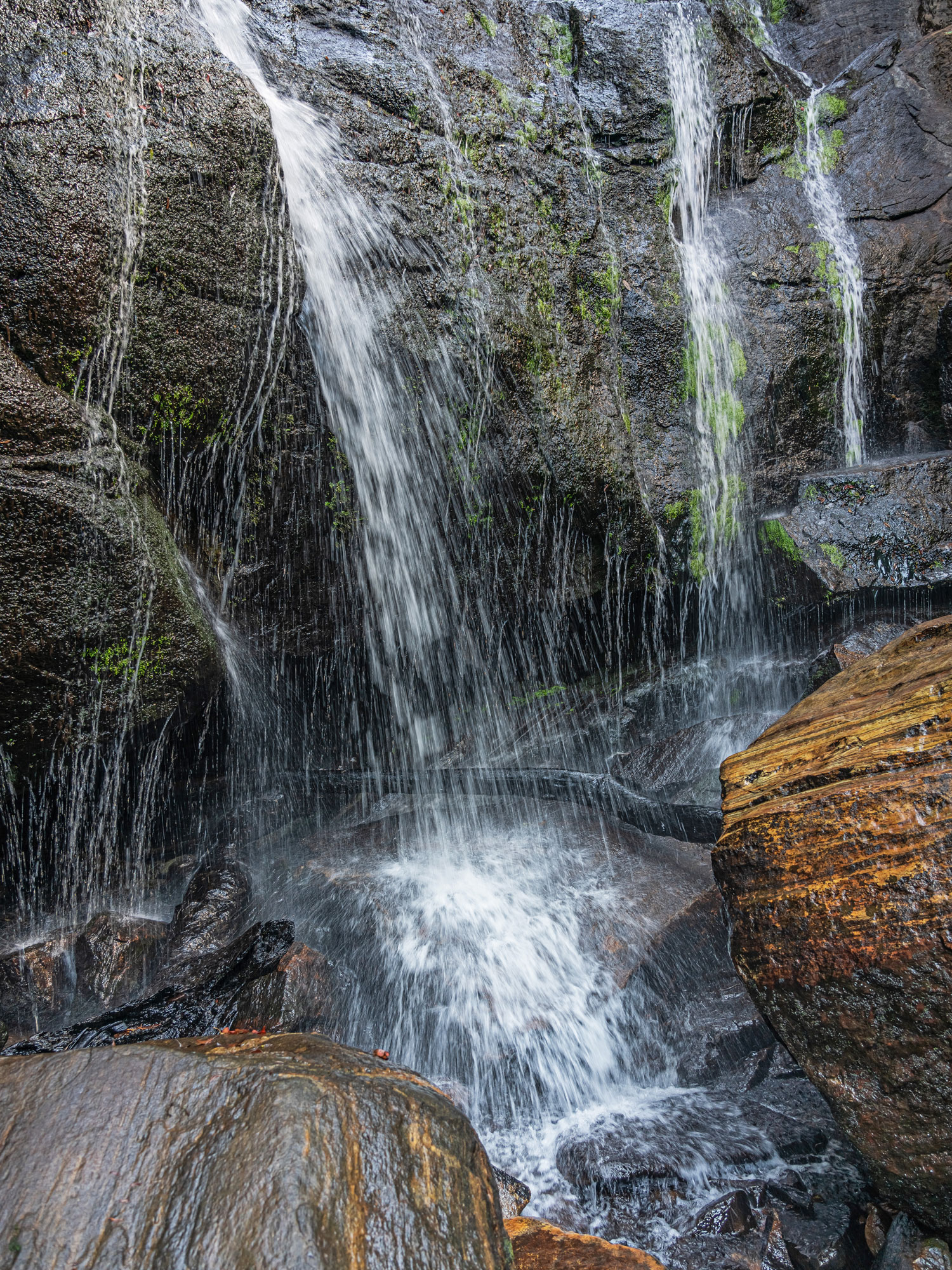 The site is an icon of biodiversity conservation in Sri Lanka and has led to a considerable increase in conservation awareness among the general public. Sinharaja is provided with the highest level of legal protection under the National Heritage Wilderness Area Act, and a high level of environmental awareness among the local community is extremely helpful in implementing the management plan prescriptions. The factors that could compromise the conservation of the World Heritage Site in the future include encroachment of the forest due to agricultural expansion (e.g., tea plantations) and construction of human dwellings and fragmentation of the forest due to road construction. There is a need for an updated management plan of action to address threats and fill management gaps. The management authority needs to take immediate steps, including the preparation of an updated management plan in consultation with stakeholders. Two projects-National REDD+ Investment Framework and Action Plan (NRIFAP) and the World Bank-funded Ecosystem Conservation and Management Plan (ESCAMP)—that have been launched recently can be useful to address some of the concerns.
Since the inscription of Sinharaja on the World Heritage list in 1988, many species of plant and animal new to science have been discovered at this site, and this is the result of a significant increase in research work over the past three decades. There has been a regeneration of forests in areas that had been subjected to selective logging in the 1970s, with an increase in the primary forest vegetation. There is a lack of baseline data, and so it is difficult to monitor the taxonomic status. The major threat to this site is illegal encroachment, which has led to a decrease in the forest cover. Illegal gem mining, deliberate fires and road construction have resulted in habitat degradation. Certain conservation groups have also reported illegal hunting and logging. The water bodies and the aquatic organisms are affected by excessive use of agrochemicals in tea plantations bordering the forest. Exotic plant species such as mahogany, Sweitenia macrophylla and the spread of invasive species such as Alstonia macrophylla, Clidemia hirta and Wedelia trilobata can cause adverse impacts on the native flora and the ecology of Sinharaja. Human disturbances such as deforestation and habitat destruction due to cardamom and tea cultivation, land degradation as a result of Illegal gem mining, extraction of forest resources, illicit timber felling, collection of non-woody products, wild cardamom, medicinal plants and firewood, human-created fires the forests and grasslands and excessive usage of pesticides in plantations are responsible for threats of different degrees in eastern Sinharaja (Surasinghe et al. 2010). The enforcement of legislation needs to improve for Sinharaja to be conserved.
The site is an icon of biodiversity conservation in Sri Lanka and has led to a considerable increase in conservation awareness among the general public. Sinharaja is provided with the highest level of legal protection under the National Heritage Wilderness Area Act, and a high level of environmental awareness among the local community is extremely helpful in implementing the management plan prescriptions. The factors that could compromise the conservation of the World Heritage Site in the future include encroachment of the forest due to agricultural expansion (e.g., tea plantations) and construction of human dwellings and fragmentation of the forest due to road construction. There is a need for an updated management plan of action to address threats and fill management gaps. The management authority needs to take immediate steps, including the preparation of an updated management plan in consultation with stakeholders. Two projects-National REDD+ Investment Framework and Action Plan (NRIFAP) and the World Bank-funded Ecosystem Conservation and Management Plan (ESCAMP)—that have been launched recently can be useful to address some of the concerns.
Since the inscription of Sinharaja on the World Heritage list in 1988, many species of plant and animal new to science have been discovered at this site, and this is the result of a significant increase in research work over the past three decades. There has been a regeneration of forests in areas that had been subjected to selective logging in the 1970s, with an increase in the primary forest vegetation. There is a lack of baseline data, and so it is difficult to monitor the taxonomic status. The major threat to this site is illegal encroachment, which has led to a decrease in the forest cover. Illegal gem mining, deliberate fires and road construction have resulted in habitat degradation. Certain conservation groups have also reported illegal hunting and logging. The water bodies and the aquatic organisms are affected by excessive use of agrochemicals in tea plantations bordering the forest. Exotic plant species such as mahogany, Sweitenia macrophylla and the spread of invasive species such as Alstonia macrophylla, Clidemia hirta and Wedelia trilobata can cause adverse impacts on the native flora and the ecology of Sinharaja. Human disturbances such as deforestation and habitat destruction due to cardamom and tea cultivation, land degradation as a result of Illegal gem mining, extraction of forest resources, illicit timber felling, collection of non-woody products, wild cardamom, medicinal plants and firewood, human-created fires the forests and grasslands and excessive usage of pesticides in plantations are responsible for threats of different degrees in eastern Sinharaja (Surasinghe et al. 2010). The enforcement of legislation needs to improve for Sinharaja to be conserved.
